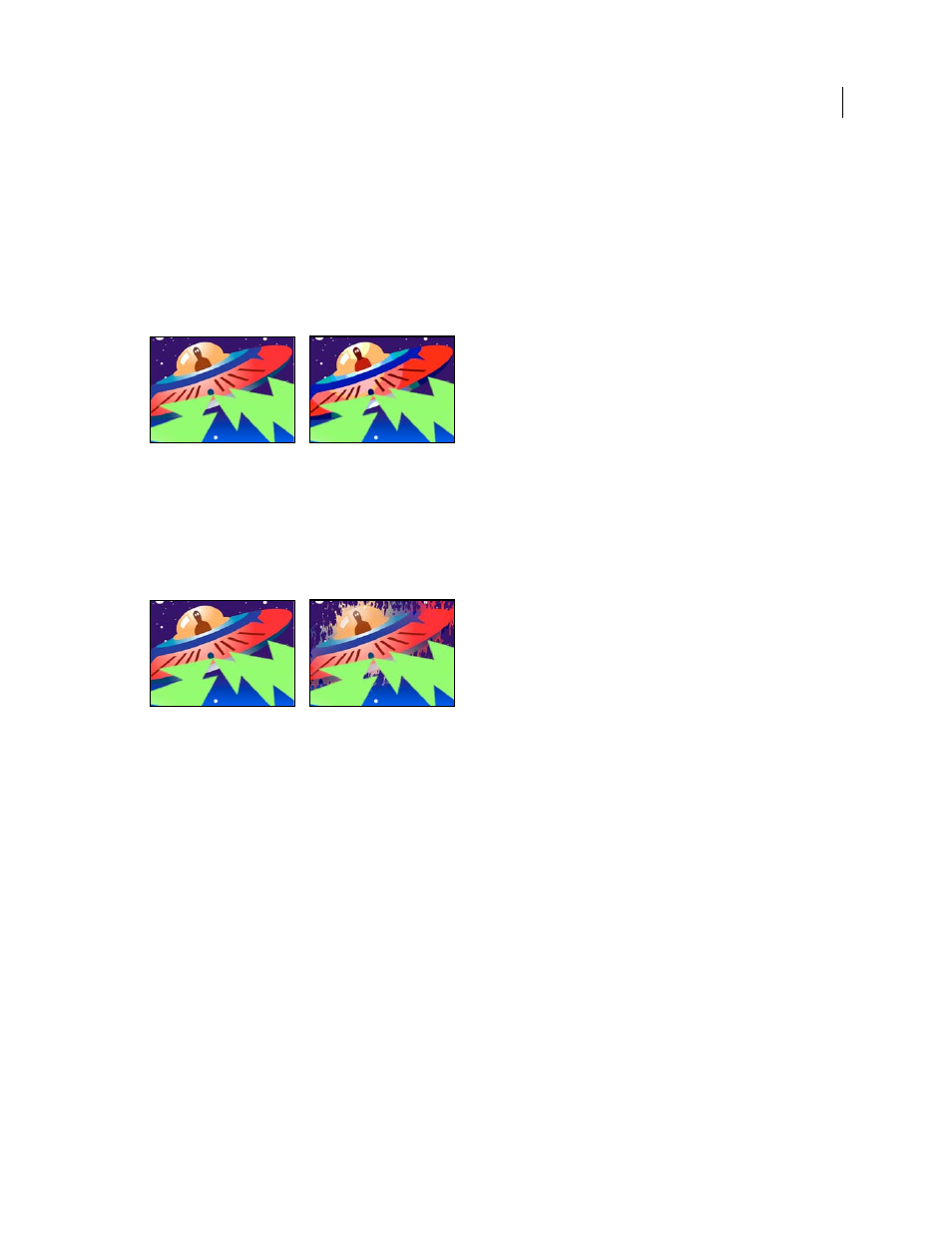Posterize effect, Roughen edges effect – Adobe After Effects CS4 User Manual
Page 597

591
USING AFTER EFFECTS CS4
Effects and animation presets
Last updated 12/21/2009
Posterize effect
The Posterize effect posterizes colors; the number of colors is reduced and gradual color transitions are replaced by
abrupt color transitions. You specify the number of tonal levels (or brightness values) for each channel in an image.
The Posterize effect then maps pixels to the closest matching level. For example, choosing two tonal levels in an RGB
image gives you two tones for red, two tones for green, and two tones for blue. Values range from 2 to 255.
Level
The number of tonal levels for each channel.
This effect works with 8-bpc, 16-bpc, and 32-bpc color.
Original (left), and with effect applied (right)
Roughen Edges effect
The Roughen Edges effect makes an alpha channel rough and can add color to simulate rust and other kinds of
corrosion. This effect gives rasterized text or graphics a naturally rough look, like the look of old typewriter text.
This effect works with 8-bpc color.
Original (left), and with effect applied (right)
Edge Type
What kind of roughening to use.
Edge Color
The color to apply to the edge for Rusty Color or Roughen Color, or to the fill for Photocopy Color.
Border
How far, in pixels, the effect extends inward from the edge of the alpha channel.
Edge Sharpness
Low values create softer edges. High values create sharper edges.
Fractal Influence
The amount of roughening.
Scale
The scale of the fractal used to calculate the roughness.
Stretch Width or Height
The width or height of the fractal used to calculate the roughness.
Offset (Turbulence)
Determines the portion of the fractal shape that is used to create the roughness.
Complexity
Determines the level of detail in the roughness.
Note: Increasing complexity results in longer rendering times. Reduce the Scale value rather than increasing Complexity
to achieve similar results.
Evolution
Animating this setting results in changes of the roughness over time.
Note: Although the Evolution value is set in units called revolutions, it’s important to realize that these revolutions are
progressive. The Evolution state continues to progress infinitely at each new value. Use the Cycle Evolution option to
return the Evolution setting to its original state at each revolution.
